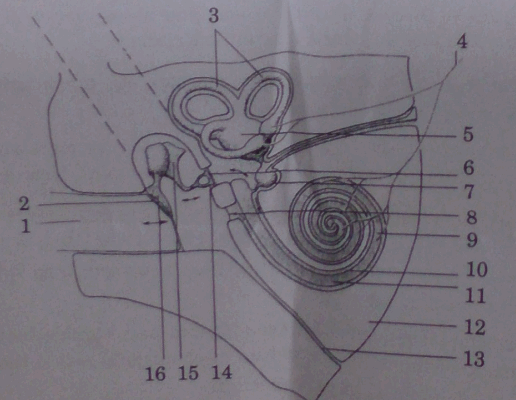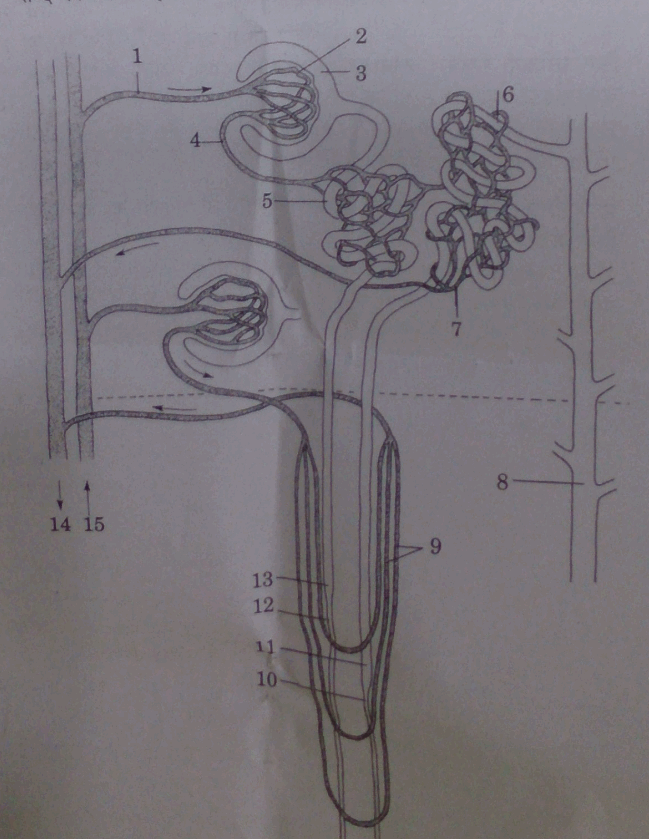- Zoology Paper Instructions
- Paper-1: SECTION-A
- Paper-1: SECTION-B
- Paper-2: SECTION-A
- Paper-2: SECTION-B
Zoology Optional Paper Instructions
- Time Allowed: Three Hours Maximum Marks: 250
- There are EIGHT questions divided in TWO SECTIONS and printed both in HINDI arid in ENGLISH.
- Candidate has to attempt FIVE questions in all.
- Questions no. 1 and 5 are compulsory and out of the remitting, any THREE are to be attempted choosing at least ONE from each section.
- The number of marks carried by a question part is indicated against it.
- Answers must be written in the medium authorized in the Admission Certificate which must be stated clearly WI the Miler of this Question-cum-Answer-QC., Booklet in the space provided. No marks will be given for answers written in a medium other than the authorized one. Word limit in questions, wherever specified, should be adhered to
- Attempts of questions shall be counted in sequential order. Unless struck off, attempt of a question shall be counted even if attempted partly. Any page or portion of the page left blank in the Question-cum-Answer Booklet must be clearly struck off
Paper-1: SECTION-A
Q1. Answer the following in about 150 words each : 10×5=50
- What are minor phyla? Enlist minor phyla with suitable examples.
- What is Jatmga bird mystry? Is it related with bird migration? Explain.
- Herdmania is a primitive and degenerate descendent of ancestral chordates’. Explain
- Apis is known tor social behaviour Discuss
- Polychaetes exhibit different modes of life adapted to habitats. Elaborate the statement.
Q2. 15+15+20 Marks
- Give an account of locomotion in Protozoa indicating locomotor organelle with suitable examples.
- What are corals and coral reefs? Describe different types of coral reefs and their formation indicating different theories
- Enumerate the functions and main components of endoskeleton of vertebrates. Give an account of types of jaw suspensoria in vertebrates with suitable diagrams.
- Discuss parasitism in ‘Copepoda’. Comment on structural peculiarities of parasitic copepods.
- Give an illustrated account of the reproductive system, life history and developmentof Asterias.
Q3. 15+15+20 Marks
- Discuss parasitism in ‘Copepoda’. Comment on structural peculiarities of parasitic copepods.
- Give an illustrated account of the reposetorive system, life history and development of Asterias.
- Give an account of locomotion in Pisces indicating the role of muscles and fins. How do some fish fly? Comment.
Q4. 15+15+20 Marks
- Sphenodon is the most primitive and crocodilians are most advanced of all living Reptiles’. Discuss the statement.
- Give an account of fresh water, egg laying and pouched mammals with suitable examples.
- Give an account of gills and accessory respiratory organs in vertebrates with suitable examples.
Paper-1: SECTION-B
Q5. Answer following: 10 x 5 =50
- What is ‘Ganga action plan’? Explain.
- Explain the role of pheromones in alarm spreading
- ‘Biotechnology is a vital tool in modern forensic science.’ Comment
- Differentiate between one-way and two-way Analysis of Comment on its applications in biostatistics.
- Electrophoresis is a valuable tool in resolving cryptic species complexes. Discuss
Q6. 15+15+20 Marks
- Discuss social hierarchies in Primates.
- What is meant by distribution? Explain patterns of distribution in natural populations.
- What are biogeochemical cycles? Discuss nitrogen cycle indicating the role of atmospheric N-fixation, the role of bacteria and the impact of human activity.
Q7. 15+15+20 Marks
- What is chromosome painting? Comment on its principles and scope.
- Give an account of causes and consequences of pollution of aquatic resources and the problem of cultural eutrophication. Suggest measures for abatement of water degradation.
- Define biodiversity hot-spot and mention the criteria of its selection. Write about biodiversity hot-spots of the Indian sub-region giving their salient features.
Q8. 15+15+20 Marks
- What is Euphenics? Explain its use for improvement of human welfare
- Discuss the status and scope of prawn culture in India. Mention commercially viable Species of fresh water and brackish water prawns.
- What are transgenic animals? How are they produced? Explain their contributions to comment on ethical concerns in relation to transgenesis 20
Paper-2: SECTION-A
Q1. Answer following questions: 10 x 5=50 Marks
- List and illustrate the components of biological Membranes in terms of their arrangement , role in the maintenance of feudicity, permeability and signal reception and translation.
- Arrange the sequential enzymatic participations in DNA replication. Describe their specific role in each step. 10
- Define operon. Give the similarities and differences between tryptophan and arabinose operon, with a focus on attenuation.
- What is mutagenesis ‘ Explain with diagrams how mutagens cause genetic changes.
- Narrate with suitable examples he use of ribozymes m health care and agriculture.
Q2. 15+20+15 Marks
- What are Rb and P53 proteins? How do they regulate the cell cycle? How do they protect the cell from carcinogenesis?
- Illustrate the different theories regarding the origin of life with special reference to protein evolution.
- Define the characters of DNA vectors. Explain with diagrams how those vectors function in a variety of situations.
Q3. 15+20+15 Marks
- “Isolation is the key factor in evolution.” Justify the statement giving suitable examples from geographical and reproductive isolation.
- Give the characteristic features of ancestors of elephants and give progressive evolutions that have occurred during various geological times resulting in the emergence of the modern day elephant
- Define Mimicry. How does it occur. How has mimicry evolved in the animal kingdom? Give examples.
Q4. 20+15+15 Marks
Q4a.The Genotype of the parent is as under:
2n + XhY x 2n+X0xh
Indicate the type of Gametes that will be formed and character represented by their offspring. Also indicate whether the parents are carriers or free from disorder. Find out :
- Percentage of carriers.
- Percentage of haemophilic sons and daughters
- Percentage of normal offsprings.
Why does haemophilia occur? Give the symptoms of haemophilia. How is haemophilia genetically inherited?
Q4b. What are giant chromosomes? Name them. State their locations and illustrate their structures. How do they function?
Q4c. What is ICZN? Explain the principle, scope and limitations in the present day scenario of nomenclature.
Paper-2: SECTION-B
Q5: Answer following 10 x 5=50
Q5a. Describe with suitable diagrams the role of G-protein in the synthesis of C-AMP. Demonstrate how C-AMP activate protein kinase.
Q5b. What are vitamins and co-enzymes? Describe fat soluble vitamins with examples.
Q5c. Label the figure and answer the following questions.

- Name the parts.
- Name the inner ossicles.
- Name the parts of cochlea.
- What is the organ of corti?
- What are the steps by which sound waves at the ear drum cause impose generation in the cells of organ of corti?
Q5d.Differentiate between saturated and unsaturated fatty acids and their functions.
Q5e.Differentiate between Innate and Adaptive immunity. Justify your answer with suitable examples.
Q6. 20+15+15 Marks
- Explain with diagrams the molecular mechanism of contraction of skeletal muscles. Discuss the role of ions and bioenergetics in muscle contraction. Attribute the cause(s) for muscle cramps.
- What is metamorphosis? Differentiate between retrogressive and progressive metamorphosis, with figures and examples. How are they regulated?
- Define hormones. Distinguish between steroid and peptide hormones. Give the name of the hormones and its mechanism of action that uses Ca+2 and/or Calcitonin as second messenger.
Q7. 15+20+15 Marks
- What are caspase enzymes? Narrate their crucial role in cell death.
- Differentiate between totipotent and multipotent cells with suitable examples. Explain the use of stem cells in human diseases.
- What is an active site? How doe* enzyme catalysis take place in an active site? Explain with suitable examples.
Q8(a) Label the parts of nephron and answer the following questions. 20 marks.

- Which region of the kidney contains malpighian body, loop of Henle and collecting ducts?
- What is Glomerular filtration rate?
- Write the steps of urine formation.
- What is the effect of vasopressin, oxytocin and aldosterone in renal function?
- What is the holding capacity of urinary bladder in man and the term used for the discharge of urine?
8(b) Explain the role of salivary glands, liver, pancreas and intestinal glands in fat and carbohydrate digestion. 15 marks.
8(c)Which stage of the development is used to produce the transgenic animals? How is it done? 15 marks

![[Download] Topicwise UPSC GSM2-2023 Paper- polity, Governance international relations in Hindi and English with topic wise analysis](https://mrunal.org/wp-content/uploads/2023/09/ana-gsm2-2023-mrunal79-500x383.png)
![[Download] Topicwise UPSC Mains General Studies Paper-1 (GSM1): History, Geography, Social Science](https://mrunal.org/wp-content/uploads/2021/10/mains-answer-writing-d1-500x383.jpg)
Please upload the medical science optional paper.
Thank you
Please Upload UPSC Mains-2015 BOTANY paper. _/\_
Respected sir,
Thank you very much for the valuable information you have given, where I am searching for this sort of guidance, really it is helpful for aspirants like.
Please Upload UPSC Mains-2015 BOTANY paper. Thank you.
Any one with zoology optional ??
I am planning to take zoology as my optional..but stuck between anthro and zoology… :( probably will take zoo… :-/
i am zoology optional
i am zoology optional
param r u refering text books or using study material?????
yes i am. but dint get 2017’s q paper.
i have Zoology Optional And i was Face interview in CSE 2018 ( 26 feb.2019). but not clear
Thanku so much sir!!
Wish to meet you some day, if (by chance) i clear this exam.
Sir, Kindly suggest me books with reference to syllabus and important topics for zoology mains exams for UPSC (IAS).
Sir tell me about the IAS prelim study materials
@Param Yea I have zoology optional , You appearing only in CSE or in forestry also?
Thanku so machine sir
I am preparing with zoology optional , so please give me guidance as much as possible.
yess any grp?
sir please teach zoology online
Thank u sir
Nice site for UPSC preparation.
2 good
please upload zoology mains paper 2016
Hello sir /mam I am preparing… With Zoology as optional…. Please suggest me books to refer
Please suggest me some study materials for zoology as optional. Thank you
Sir please upload zoology optional pdf
Sir please upload zoology optional pdf
Yes I also wants to take zoology as optional for IPSWICH.
Please upload UPSC Mains 2017; zoology paper
good evening sir,
my optional subject is zoology.
please send me syllabus and pattern of exam details
Thank you sir,
My name is karunakar sir
my optional subject is Zoology
could you please send me detailed syllabus and pattern of examination
email:mkarunakar401@gmail.com
Please provide botany subject
sir I am hindi mediam student sir please tell me zoology optionan book list for hindi mediam